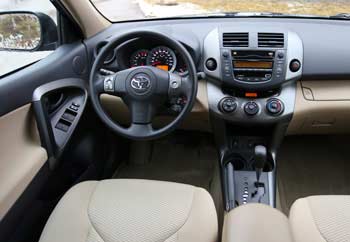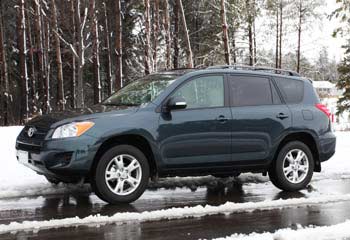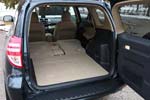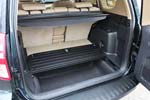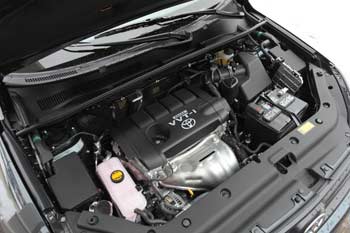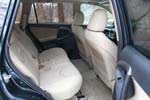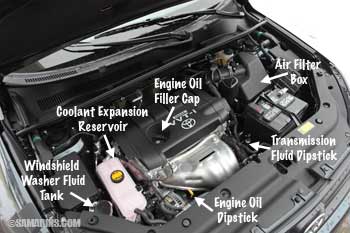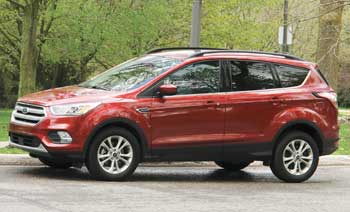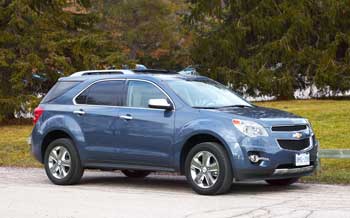2006-2012 Toyota RAV4: problems, pros and cons, photos
Updated: March 04, 2020
The RAV4 is known for its practicality and comfortable car-like driving experience. Toyota's best-selling SUV is a popular choice on the used car market. It's a roomy compact car-based SUV available with a fuel-efficient 4-cylinder or a strong V6 engine.
The 2006-2012 Toyota RAV4 comes with front or all-wheel drive. Optional third-row seating was offered but is rare to find. Is a used Toyota RAV4 reliable? Which engine is better? What are the reported problems? Toyota RAV4 problems: A clunking or knocking noise when turning the steering wheel left or right could be caused by a worn-out intermediate steering shaft. The intermediate shaft replacement costs $320-$480. We also found a few reports where the whole steering rack had to be replaced, which is more expensive. This forum has more info.
Failed ignition coils are quite common too. A bad ignition coil can cause an engine to misfire and shake. When replacing a failed ignition coil, it's a good idea to change all the spark plugs if they are old.
In 2015, Toyota issued the Warranty Enhancement Program: ZE7 Extension of Warranty Coverage for 2AZ Engine Oil Consumption in the 2006-2008 RAV4 2.4L engine; read more on this forum.
There have also been a number of complaints about stripped threads for the head bolts in the 2.4L engine. The repair is quite expensive. Watch this great video from Eric O. explaining the repair.
Advertisement
There have also been complaints about the oil consumption in the V6 engine in the 2006-2008 RAV4.
forum has listed many service bulletins.
Engines: The 2006-2008 4-cylinder RAV4 model has a 166-hp 2.4L DOHC (2AZ-FE) engine. The 2009 and newer RAV4 comes with a 179-hp 2.5L inline-4 (model 2AR-FE), which is one of the most reliable engines on the market. The optional 269-hp 3.5L 2GR-FE V6 turns the RAV4 into a rocket. It's also a very good engine and can last long with proper care.
Timing belt or timing chain: All three engines (2AZ, 2AR, 2GR) have a timing chain; there is no timing belt. The timing chain doesn't need to be replaced in regular intervals.
Mechanical: The RAV4 has MacPherson struts in the front and a double wishbone layout in the rear.
Interior: The interior is comfortable with more rear seat space than in some larger SUVs. Controls and gauges are simple and user-friendly. The steering tilts and telescopes. Front cup holders are illuminated. The 60/40 split second-row seat reclines, slides forward or backward or folds down for extra cargo space (73 cu. ft. with seats folded). There is a large storage under the trunk cover. A roof rack is optional.
Driving experience: On the road, the RAV4 feels more like a tall car than an SUV. It handles easily and feels very agile. The ride is comfortable; road imperfections are nicely absorbed. The electrical steering is light and responsive. The turning radius is small. The visibility is very good in the front; the rear pillars are thick but the large side mirrors help make up for that.
Related reviews:
Toyota RAV4 2013-2018
Used Subaru Outback 2005-2009
Used Mazda CX-5 2013-2016
Used Honda CR-V 2007-2011
Used Toyota RAV4 2001-2005
Subaru Outback 2010-2014
Used Subaru Forester 2009-2013
Pros: Fuel economy (4-cylinder model), reliability, comfortable ride and car-like handling, decent cargo space, plenty of storage areas, maneuverable.
Cons: Front seats lack support on long trips, no manual transmission available, rear gate opens toward the curb.
Overall: The Toyota RAV4 is a practical, easy to drive small SUV. The 2.5L inline-4 (2AR-FE) in the 2009-plus RAV4 is the best engine choice; it's fuel efficient, reliable and should last long with good care. The 3.5L V6 is also mostly trouble-free, although we found complaints about the oil consumption in the 2006-2008 V6 models. There have also been complaints about the 2.4L 2AZ-FE engine in the 2006-2008 RAV4, including stripped threads for the head bolts and excessive oil consumption. It's a good idea to check the engine oil level regularly and keep it topped up, as driving with low oil level can cause problems. As of March 2020, Consumer Reports rates the 2006, and the 2008-2012 RAV4 model years as 'Recommended'.
| EPA Fuel Economy: | mpg city/hwy |
L/100 km city/hwy |
| 2009, 2010 RAV4 FWD 2.5L auto | 22/28 | 10.7/8.4 |
| 2011, 2012 RAV4 FWD 2.5L auto | 21/28 | 11.2/8.4 |
| 2006-2008 RAV4 FWD 2.4L auto | 21/27 | 11.2/8.7 |
| 2009-2012 RAV4 4WD 2.5L auto | 21/27 | 11.2/8.7 |
| 2006-2008 RAV4 4WD 2.4L auto | 20/25 | 11.8/9.4 |
| 2006-2010 RAV4 2WD 3.5L V6 auto | 19/27 | 12.4/8.7 |
| 2011, 2012 RAV4 2WD 3.5L V6 auto | 19/26 | 12.4/9.0 |
| 2006-2010, 2012 RAV4 4WD 3.5L V6 auto | 19/26 | 12.4/9.0 |
| 2011 RAV4 4WD 3.5L V6 auto | 19/25 | 12.4/9.4 |
The 2006-2008 2.4L 4-cylinder AWD Toyota RAV4 gets 20 mpg city and 25 mpg highway (11.8/9.4 L/100 km).
The 2009-2012 2.5L 4-cylinder AWD RAV4 is rated at 21/27 mpg (11.2/8.7 L/100 km).
With mostly highway driving, the 2009 AWD 4-cylinder RAV4 can travel for up to 413 miles (665 km) on a 15.9-gallon (60 L) tank.
What to look for when buying a used Toyota RAV4: During a test drive, watch out for whining or humming noises from the drivetrain. This would indicate a problem. Watch for knocking, clunking or rattling noises from the steering when driving over small bumps or on rough roads. When the car is parked, try shaking the steering left to right; there should be no clunking noises. Watch out for leaks. Check the engine oil level; low oil level could be an indication that the engine consumes oil.
"Check Engine" light to come on could be quite expensive to repair. For example, some of the issues with an evaporative system could require a replacement of the charcoal canister; which is a few hundred dollar repair. Read more: How to inspect a used car - illustrated guide. Before buying a used RAV4, have it inspected by your mechanic and check for recalls at: Safety Recalls - NHTSA
Toyota RAV4 Maintenance Tips: Change the engine oil regularly. Toyota recommends using 5W-20 or 0W-20 oil for the 4-cylinder engine and 5W-30 oil for the V6. As the engine tend to consume more oil at higher mileage, check the oil level between oil changes and top up if needed. Keep the engine coolant topped up, the coolant level is visible in the coolant expansion reservoir.
When adding or changing transmission fluid, make sure to use only the recommended type; wrong transmission fluid can cause problems. In 4WD models, you also have the transfer case oil and the rear differential oil that need to be changed at recommended intervals.
4WD: The RAV4 all-wheel drive system has an electronic controlled coupling to distribute the torque to the rear wheels. This allows the RAV4 to switch from FWD to 4WD automatically when needed. We drove the 4WD RAV4 in various snowy and icy conditions, and with winter tires it felt secure. All V6 RAV4 models, as well as all 4-cylinder models with third-row seating, come standard with Hill-start Assist Control (HAC) and Downhill Assist Control (DAC).
